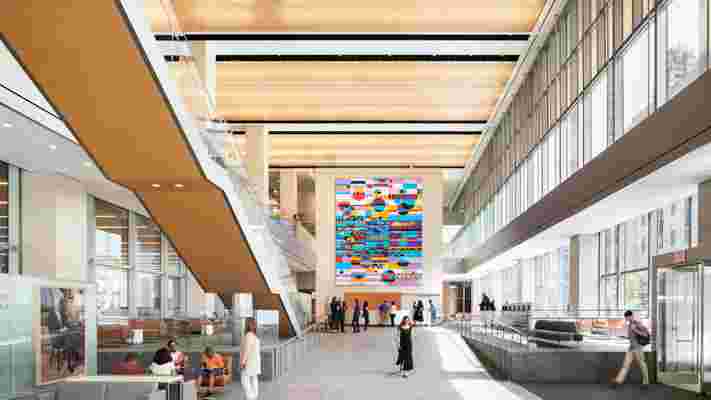Natural light is typically low on the priority list for health-care design. But the sun is shining at NewYork-Presbyterian Hospital’s new ambulatory-care center, designed for chemotherapy, infusion therapy, and myriad other outpatient treatments and procedures. Beyond the tower’s glass–and–obeche wood curtain wall, visitors find a light-filled triple-height lobby, with floating stairs and a monumental painting by Beatriz Milhazes—one of two site-specific commissions by the Brazilian artist for the facility. Both are among the nearly 400 works curated by Salon 94 gallery.

This art program is just one innovation on display. The 734,000-square-foot center champions an architectural model that integrates 21st-century care with patient-centered design. “A lot of it is focused on reducing anxiety,” explains Erin Nunes Cooper of the architecture-engineering firm Ballinger, which collaborated on the building with HOK and Pei Cobb Freed & Partners. Prep rooms double as recovery rooms, providing continuity for patients and their companions. Hallways run along the perimeter, taking in sunshine and city views. And MRI facilities are aboveground, rather than relegated to the basement, as is usually the case. Notably, the center is home to New York’s first MRI-guided linear accelerator, the most accurate cancer-radiation device.
As treatment options change, so, too, can the physical architecture. Sections of the swirl-patterned façade are removable so that old equipment can be replaced. Says Joe Ienuso, senior vice president of facilities and real estate at NewYork-Presbyterian: “Technology will continue to evolve, and the building anticipates that.”
